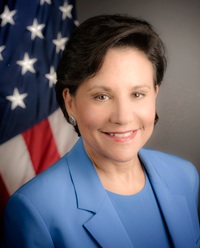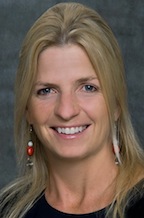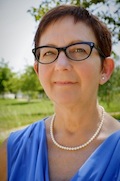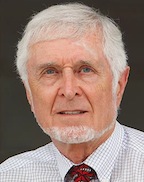Daily Business Report-Aug. 1, 2016
Northrop Grumman’s Global Hawk flown by the Air Force. (Courtesy of Northrop Grumman)
Northrop Grumman’s Global Hawk
UAS Surpasses 200,000 Flight Hours
Northrop Grumman Corp.’s autonomous Global Hawk unmanned aircraft system has surpassed 200,000 flight hours, reinforcing its status as the most effective high altitude, long endurance intelligence gathering aircraft in the world, the San Diego company announced.
The U.S. Air Force’s Global Hawks logged 88 percent of the 200,000 flight hours with the remaining hours flown by NASA Global Hawks, Germany’s Full Scale Demonstrator and the Navy’s broad area maritime surveillance aircraft systems.
Global Hawks operate at altitudes up to 60,000 feet for more than 30 hours, surveying thousands of square miles on a single mission. Global Hawk carries a variety of sensor payloads that allow military commanders to gather near real-time imagery and use radar to detect moving or stationary targets on the ground. The system also provides airborne communications and information sharing capabilities to military units in harsh environments.
______________________________________

NSF Awards $15 Million to Create
Science Gateways Community Institute
The National Science Foundation has awarded a five-year $15 million grant to a collaborative team led by the San Diego Supercomputer Center at UC San Diego to establish a Science Gateways Community Institute to accelerate the development and application of highly functional science gateways that address the needs of researchers.
The Institute’s goal is to increase the number, ease of use, and effective application of gateways for the greater research and engineering community, resulting in broader gateway use and more widespread engagement in science by professionals, citizen scientists, students, and more. The project will officially get underway starting this summer.
The San Diego Supercomputer Center has a proven track record in leading the creation of science gateways, which are widely used throughout numerous domains, from astronomy and biophysics to molecular dynamics and the neurosciences.
By using gateways, scientists can conduct their research in significantly shorter times without having to understand how to operate supercomputers, according to Mark Miller, principal investigator of the CIPRES gateway and an SDSC biologist. Typically, about 200 CIPRES jobs are running simultaneously on SDSC’s Comet supercomputer, and another 100 on Gordon.
Trans-Pacific Partnership’s Impact
On San Diego is Topic of Special Event

World Trade Center San Diego and Qualcomm are inviting the public to attend a special event on Wednesday to learn how the Trans-Pacific Partnership (TPP) will impact the San Diego economy.
The TPP is an international trade deal negotiated by the Obama Administration and 11 other countries on the Pacific Rim. The deal is an agreement designed to lower barriers for U.S. exporters of goods and services by substantially cutting tariffs and implementing limits on non-tariff trade impediments.
According to World Trade Center San Diego, San Diego’s prime location on the edge of the Pacific Rim positions the region as a natural trading partner for TPP members. It says San Diego sends a larger share of its exports to TPP countries than does the U.S. as a whole, making it likely that San Diego would realize relatively greater benefits from the reduction in trade costs associated with the TPP.
Speakers will include U.S. Secretary of Commerce Penny Pritzker, Qualcomm CEO Steve Mollenkopf, UC San Diego Vice Chancellor for Academic Affairs Peter Cowhey, among others.
The event will be held from 4 to 5:30 p.m. in the Qualcomm Theater, 5775 Morehouse Drive, San Diego.
Salk Institute Ranks High
In Rising Stars Science Index
Salk Institute ranks as one of the leading scientific “stars” in North America with high-quality output that has grown particularly fast, according to a new report by Nature Research.
The data, published July 27 and July 28 in a report called the Nature Index, use a series of metrics related to papers published in the last few years to evaluate over 8,000 scientific institutions across the globe. The index, designed to be a tool for assessing research performance, charts which countries and institutions are the most efficient at producing high-quality results based on publications in top-tier journals.
Salk Institute is listed among the top 25 institutions in all of North America in the “Regional Stars” section of the index, along with other esteemed centers such as Stanford University, the Lawrence Berkeley National Laboratory and the California Institution for Biomedical Research. These institutions dramatically increased their contribution to a selection of top natural science journals from 2012-2015.
UK Consulate to Open
Trade Office in San Diego
By City News Service
The United Kingdom might be exiting the European Union, but it’s strengthening economic ties to San Diego and two other U.S. cities, the UK Department for International Trade announced.
The British government announced that it will open offices in San Diego, Minneapolis and Raleigh to promote U.K. business, economic and political ties.
“Our ambitious vision for an open and outward-looking U.K. economy includes growing our footprint in the most important markets around the world, and these three cities offer exciting opportunities to boost trade and investment,” said Liam Fox, international trade secretary. He said the cities were chosen because of their economic productivity, and well-established research and development institutions.
San Diego officials have been building ties with the U.K. over the past year or so through a Brookings Institution program and have been trying to boost the city’s international business profile, building on the thriving life sciences industry, tourism and defense.
“As San Diego’s reputation as a global hub for trade and innovation continues to grow, we are excited to welcome a consulate office of the United Kingdom to our region,” Mayor Kevin Faulconer said. “I look forward to working with British representatives to strengthen San Diego’s relationship with the U.K.”
Executive Director Chosen for USD
School of Leadership and Education Sciences

Dr. Emily Young has been selected as the new executive director for the Nonprofit and Philanthropic Institute (NPI), part of the School of Leadership and Education Sciences at the University of San Diego. Her first day will be Monday, Aug. 29.
In her role with NPI, Young will lead a team of researchers, professional consultants, and administrators as well as collaborate with SOLES’ academic units.
Young has more than 20 years of experience in philanthropy and higher education, most recently serving as vice president of community impact at The San Diego Foundation, where she was first hired to build the foundation’s Environment Program in 2000.
In addition to her environmental work, she managed regional initiatives on arts and culture, civic engagement, education and youth development, and neighborhood revitalization, especially for underrepresented communities.
Prior to The San Diego Foundation, Young was an assistant professor at the University of Arizona, where she taught courses on environment and society, geography, and Latin America.
Change of Command Ceremony
Thursday for Naval Base San Diego
Capt. Roy Love will relieve Capt. Curt Jones as commanding officer of Naval Base San Diego at a 9 a.m. change of command ceremony Thursday at Pier 12 at Naval Base San Diego.
Love comes to San Diego after serving on the Joint Chiefs of Staff as a division chief under the Deputy Director for Regional Operations. Early in his career, he attended the Broadened Opportunity for Officer Selection and Training (BOOST) Program in San Diego and deployed to Iraq in support of Operation Iraqi Freedom supporting the Army 304th Sustainment Brigade.
During Jones’s tenure, he provided service and support for 51 ships and more than 127 tenant commands. Jones will go to Navy Region Southwest in San Diego where he will serve as the chief of staff for the regional commander.
San Diego Continuing Education
To Get New VP of Instruction

Educator Kate Alder will serve as the vice president of instruction at San Diego Continuing Education pending approval by the San Diego Community College District Board of Trustees on Aug. 25.
As the current dean of career technical education at Cuyamaca College in the Grossmont-Cuyamaca Community College District, Alder oversees 14 instructional programs in nine disciplines.
In addition to her administrative experience, Alder has been a faculty member in both adult education and community colleges for 15 years. Her leadership includes using innovative approaches to growing relevant adult education programs; establishing enrollment management priorities based on careful data analysis; regional collaboration, and student-centered instruction.
Scripps Professor Elected VP
Of Acoustical Society of America

Michael Buckingham, a Scripps Institution of Oceanography researcher, was elected vice president-elect of the Acoustical Society of America (ASA). Buckingham will assume the office of vice president on June 29, 2017.
A professor of ocean acoustics at Scripps, Buckingham’s research focuses on ocean acoustic propagation, ambient noise in the marine environment, and acoustic imaging. His experiments involve the identification of objects in the ocean using naturally occurring sounds, produced as a result of bubbles forming near the surface. This system, described as “acoustic daylight” uses an experimental electronic imaging system that reveals objects in the ocean by listening to ambient underwater noise and displaying the objects as a simple video image.
“For some thirty years the Acoustical Society of America has been my main professional home,” said Buckingham. “During that time, I have benefitted greatly from my interactions with fellow acousticians at the regular technical meetings of the Society and on its administrative committees. Being elected to this position is an honor and a privilege.”
NASSCO Marks Seventh Ship
Delivery in Just Over a Year
General Dynamics NASSCO marked its seventh ship delivery in the span of just over a year on Monday, July 25.
The Garden State, an ECO Class tanker built for longtime customer American Petroleum Tankers, was delivered during a special signing ceremony and is one of three classes of ships delivered by the San Diego-based shipyard since June of last year.
“In the past year, NASSCO shipbuilders have delivered seven ships — or the equivalent to 100,000 tons worth of steel,” said Kevin Graney, vice president and general manager for General Dynamics NASSCO. “Among the seven vessels delivered, three have been lead ships: the world’s first containership powered by liquefied natural gas, the U.S. Navy’s first Expeditionary Sea Base and the nation’s most fuel efficient product tanker. We are proud of the diverse design and build portfolio we have delivered during the course of this year.”
Within the year, NASSCO has delivered the world’s first two containerships to be powered by liquefied natural gas. The 764-foot-long ships — the Isla Bella and the Perla del Caribe —currently service the Puerto Rican-Jacksonville trade route and are considered to be the cleanest cargo-carrying ships anywhere in the world.
NASSCO also delivered four ECO Class product tankers within the same time period — three for American Petroleum Tankers and one for a partnership between SEA-Vista LLC and SEACOR Holdings Inc. The new “ECO” design allows for 33 percent increased fuel efficiency with a 330,000 barrel cargo capacity. NASSCO currently has under construction four remaining tankers under contract between the two companies.
In June of last year, NASSCO delivered the U.S. Navy’s first Expeditionary Sea Base (ESB) as part of the original Mobile Landing Platform program. The USNS Lewis B. Puller was built with a 52,000 square-foot flight deck, stowage and accommodations spaces for up to 250 personnel. The ship was also designed to support MH-53 and MH-60 helicopters. NASSCO is currently constructing the second ESB and is under contract to build a third.
For its commercial work, NASSCO partners with DSEC—a subsidiary of Daewoo Shipbuilding & Marine Engineering of Busan, South Korea—for access to state-of-the-art ship design and shipbuilding technologies.
NASSCO also maintains a bi-coastal ship maintenance and repair operation with locations serving San Diego; Mayport, Florida; Norfolk, Virginia; and Bremerton, Washington.
General Atomics’ Radiation Monitoring
Systems Installed at New Nuclear Power Plant
General Atomics Electromagnetic Systems announced that its radiation monitoring systems have been successfully installed throughout the first new U.S. nuclear power plant scheduled to be put into operation since 1996. Tennessee Valley Authority (TVA) selected the San Diego-basec company to provide full plant radiation monitoring systems for the new Watts Bar Unit 2 nuclear power plant. Watts Bar Unit 2 recently achieved criticality and is scheduled to be commercially operable by the summer of 2016.
“We are proud to be an integral part of the operational launch of the first new U.S. nuclear power plant in over two decades,” said Scott Forney, president of General Atomics Electromagnetic Systems “Since 1965, we’ve maintained a solid reputation for designing and manufacturing the highest quality, most reliable safety-related products, and for continually supporting our products and our customers throughout a plant’s lifecycle. We now look forward to working with TVA and supporting our products and the new Watts Bar Unit 2 plant for the decades to come.”



